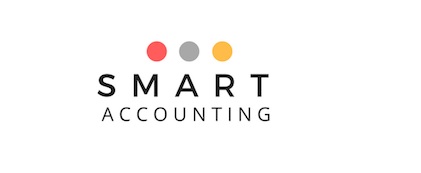How to avoid bad debts
Getting paid on time is important to the financial health and wellbeing of your business. Having good credit control is important for maintaining a healthy cash flow and a profitable business. While good credit control can help avoid late payments becoming a serious problem, there may still be times when a customer can’t or won’t pay.

Lowering the risk
Before you get to this stage, do as much as you can to reduce the likelihood of overdue payments becoming bad debts. This is not always easy, especially if you are just starting a business where every new sale is cause for celebration.
Ensure that before you take on any orders, you are clear on when you will be paid for them. You may have bills that can unexpectedly come in and you need to ensure you have the funds to pay them.
Get tighter control
Tight credit control is your first line of defence. It’s the best way to avoid or limit your exposure to bad debts by a few simple steps:
-
Complete thorough business and reference checks before you offer credit to new customers.
-
Set reasonable but fair credit limits and instruct your staff to notify you if a customer wishes to exceed an agreed credit limit.
-
Approve additional credit extensions in advance.
-
Include clear payment conditions in your terms of trade agreement.
YOUR PAYMENT TERMS
Structure your payment terms to encourage prompt payment. For example, you could offer a 5% discount for payments made within 30 days or charge interest on outstanding balances.
Be firm – don’t allow the discount if the payment is late, even if it’s only a day late. You can vary this if the situation warrants it for good customers as a once-off exception, but make it clear that you’re breaking the rules this one time because you value the business relationship.
Make sure your terms of trade specify when you will start to charge interest on overdue amounts and the rate of interest you will be charging.
Your terms of trade will only be enforceable if you ensure customers sign their acceptance before you extend them any credit. Implementing your terms of trade to new customers is important. Also consider sending customers your terms at the beginning of each year as a reminder.
PREVENTION IS EASIER THAN COLLECTION
Good systems are the best way to avoid bad debts and the problems involved in recovering them:
-
Send out your invoices and statements on time, preferably as soon as the job is completed. Late invoices can get missed and often get paid late. Larger businesses have set payment cycles so prompt invoicing means you’re less likely to miss the next payment cycle.
-
Keep an up-to-date record of what each customer owes you and note any customers approaching their credit limit.
-
Follow up immediately once payment is noticeably overdue or payment has not been made. Try to uncover the problem. You don’t want to appear desperate for the money, but small invoices can often be missed, especially if your client is a large business.
BE FRONT OF MIND
By making it clear that you expect to be paid on time, every time, and always making contact if payment is late, you’re more likely to be front of mind when customers schedule payments. This means a customer juggling payments because of cash flow problems is more likely to give you higher priority than a business whose systems are more relaxed. Many people or businesses ‘pay the ones that make the most noise’. Within reason, make sure this is you.
STICK TO YOUR TERMS OF TRADE
Stop supplying customers who haven’t paid their accounts on time. You can use the fact that they need your goods or services as a lever to get paid promptly. This might cost you some business, but it will also reduce the risk of being exposed to bad debt.
Similarly, stop supplying goods to customers in excess of their credit limit. This doesn’t mean that you won’t increase the limit if requested, but it gives you the opportunity to reassess the creditworthiness of your customer before increasing your debt exposure.
OVERDUE PAYMENTS
There are no rules on what to do when payment is not made on time. Your approach is likely to vary depending on the amount of debt, how long it has been unpaid, your history with the customer and their reason for being overdue.
FIND OUT WHY
The first step is to find out why your customer hasn’t paid. Some common reasons include:
-
The customer has a problem with your product, service or invoice. If so, identify the issues as soon as possible and reach an acceptable solution. This eliminates any further excuse for not paying.
-
The customer has some sort of accounting or payment system glitch. This can usually be resolved amicably within days of the problem being identified.
-
The customer has a temporary or long-term cash flow problem. These are usually more difficult to deal with. You may be able to negotiate a repayment schedule that allows them to trade out of the current tight spot. If so, be sure to confirm the agreed repayment schedule in writing and make it clear that any part payments will not be considered settlement in full.
USE DEBT COLLECTORS OR LAWYERS
If all else fails, then debt collection agencies or your lawyer will help you find the most effective way to recover your debt.
Before you hand over a debt for collection by a third party, it’s a good idea to contact your customer one last time. Phone or visit them, as letters and emails can get thrown away or deleted, and another invoice or statement is an excuse to leave the issue for another month. Let them know you plan to pass the matter over to your lawyer or debt collector.
Once you hand the debt over, there’s a strong possibility that the customer will realise you’re serious about chasing the debt. They will often pay up straight away – in full or in agreed instalments. Most times a letter from a lawyer or agency is enough to do the trick.
CHECK THE COSTS
Firstly, find out exactly how much the collection service will cost. Ask your accountant, lawyer, business colleague or industry body to recommend a few debt collectors or lawyers who specialise in debt collection. You can then compare costs and services.
The fees are likely to include a flat fee or a percentage of the debt recovered, or a combination of both. This may or may not be inclusive of all costs, so find out exactly what the fees cover and check if there are any additional charges.
Consider the amount of money you’re owed. Is it worth chasing a debt of $19.80 when it’s going to cost more than that to collect the debt? It might be better to write-off small amounts to preserve your business relationship. If you do decide the amount is not worth your time or the cost to collect, let it go and move on.
RESOLVING DISPUTES
Sometimes it’s worthwhile trying to resolve disputes using an intermediary who will listen to both sides of the story. Contact the fair trading agency in your state to see if they can act as an informal negotiator. If you can’t resolve the dispute, then your next step may be to get legal advice or lodge a claim with the Small Claims Tribunal.
BE FLEXIBLE WITH CARE
Implement a clear payment policy, but treat each case on its merits – you don’t have to apply a broad-brush approach to every customer. Allowing a debtor an extra month to pay their invoice may see them become one of your most loyal customers once they have recovered from their cash flow issues.
Writing off late payment penalties could be in your best interests if you’re chasing another large order from someone.
Bear in mind that every time you deviate from your standard payment policy, you expose yourself to possible bad debts. Balance your decision with how much impact it will have on your small business. If it places you in danger of not being able to pay your bills, then it’s probably not in your best interest.
If you seek further assistance please contact us on 9999 9999
Reproduced with permission of National Australia Bank (‘NAB’). This article was original published at https://www.nab.com.au/business/small-business/cashflow-planning-and-tax/how-to-avoid-bad-debts
National Australia Bank Limited. ABN 12 004 044 937 AFSL and Australian Credit Licence 230686. Any advice contained in this article has been prepared without taking into account your objectives, financial situation or needs. Before acting on any advice on this website, NAB recommends that you consider whether it is appropriate for your circumstances.
© 2018 National Australia Bank Limited ("NAB"). All rights reserved.
Important:
Any information provided by the author detailed above is separate and external to our business and our Licensee. Neither our business, nor our Licensee take any responsibility for any action or any service provided by the author.
Any links have been provided with permission for information purposes only and will take you to external websites, which are not connected to our company in any way. Note: Our company does not endorse and is not responsible for the accuracy of the contents/information contained within the linked site(s) accessible from this page


